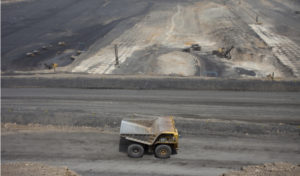
Like most subsidies, China’s subsidy for electric power has generated a wave of misallocation. Chinese power producers, taking advantage of high subsidized electric prices, have borrowed $1.2 trillion, mostly for building dirty coal power plants. Those power plants now need to produce in order to pay back their debts. Meanwhile, the Chinese government would like to move toward cleaner forms of energy, but its own subsidies have built a dirty power infrastructure system that can’t be undone so easily. Nathaniel Taplin reports:
In the West, bad children get coal in their Christmas stockings. In China, everyone gets coal, as consumption peaks during the winter-heating season.
Its leaders want to change this. In line with President Xi Jinping’s recent call for a “better life” for Chinese citizens, coal power curbs this winter are rolling across northern China.
China’s green push has a problem, however. Electric power is the country’s most indebted sector, with total debt of 7.8 trillion yuan ($1.2 trillion) at the end of 2016, according to the Asean+3 Macroeconomic Research Office. A good chunk of that is sunk into coal power plants with the capacity to produce more than one billion kilowatts of electricity, roughly three times the coal power capacity of the U.S.
Keeping all those coal-fired power plants current on their loans is a key constraint on China’s ability to quickly switch to greener power. Part of the problem is pricing. High state-set power prices make building new coal power plants attractive when coal prices fall, boosting margins. Such investment has recovered strongly in recent months as coal price gains have ebbed—newly installed thermal coal capacity was up 8% year-to-date in October, outpacing that of new hydropower, wind and nuclear plants.
Read more here.



